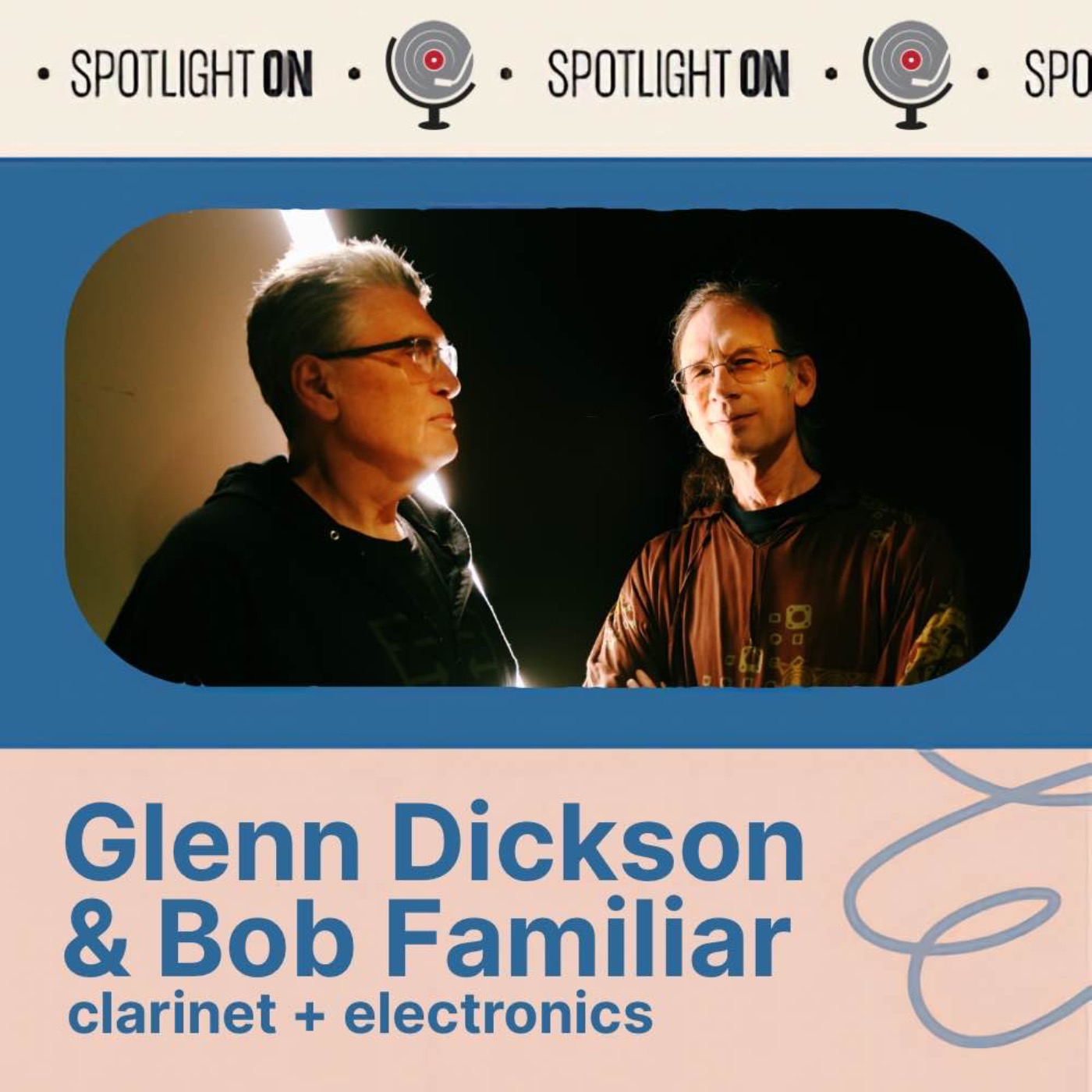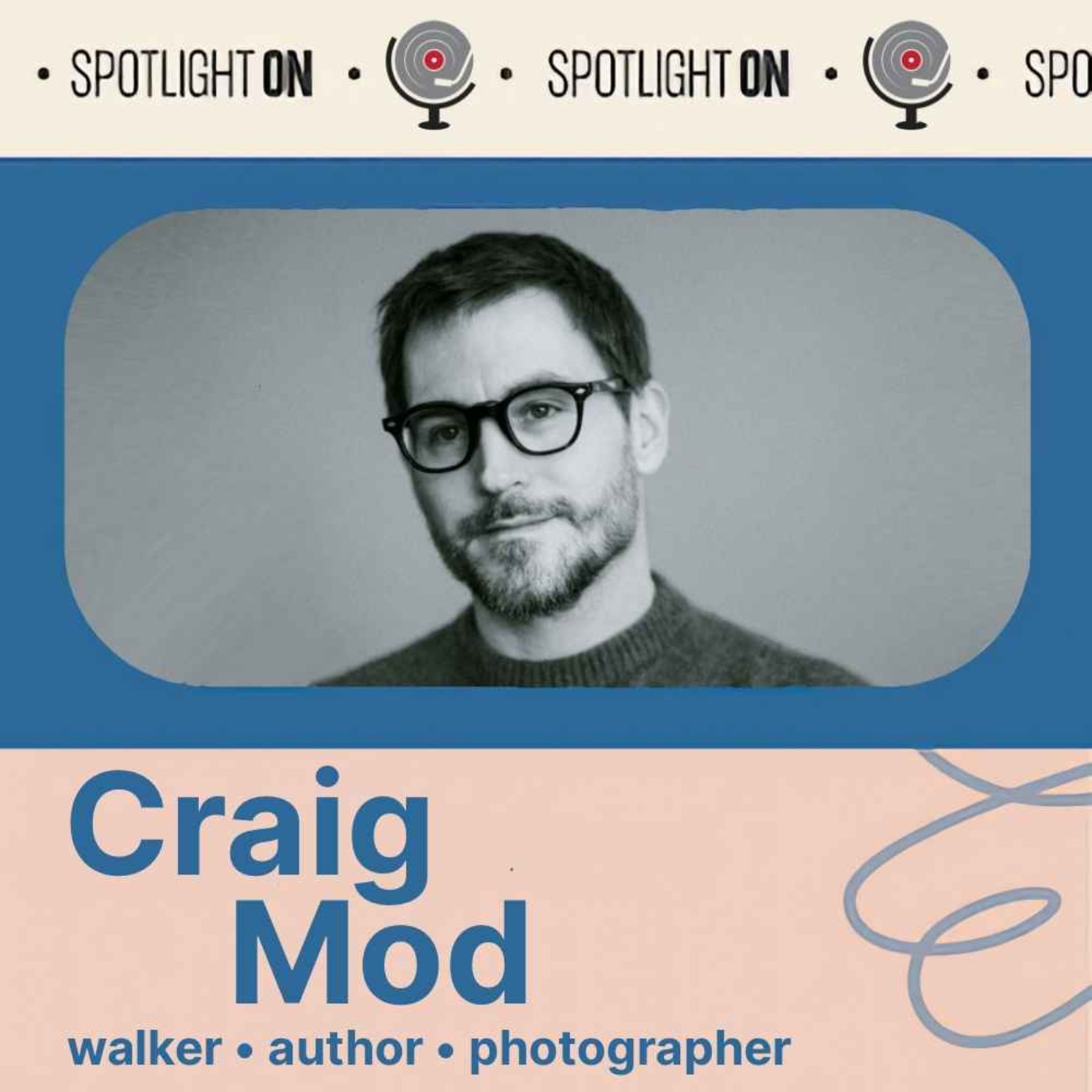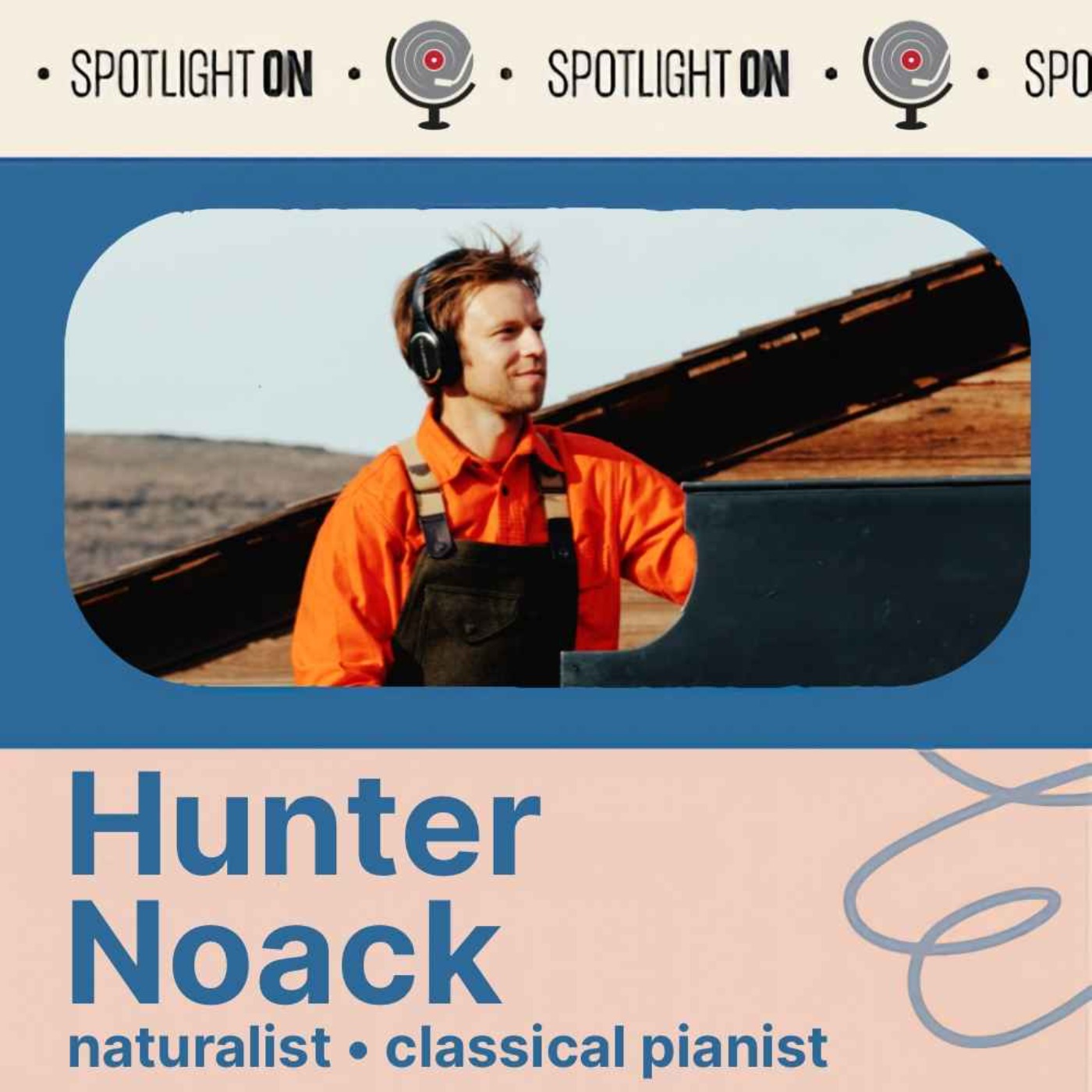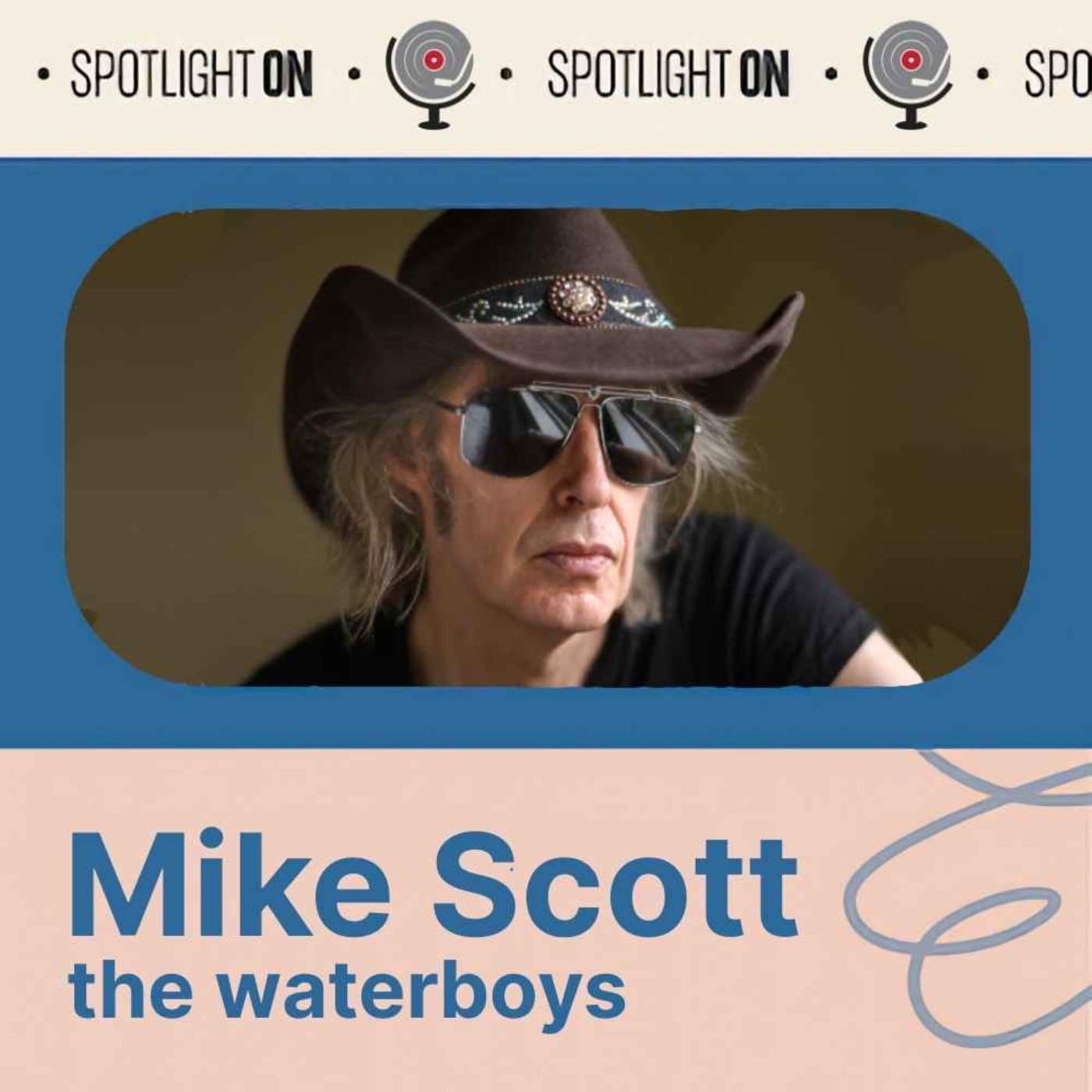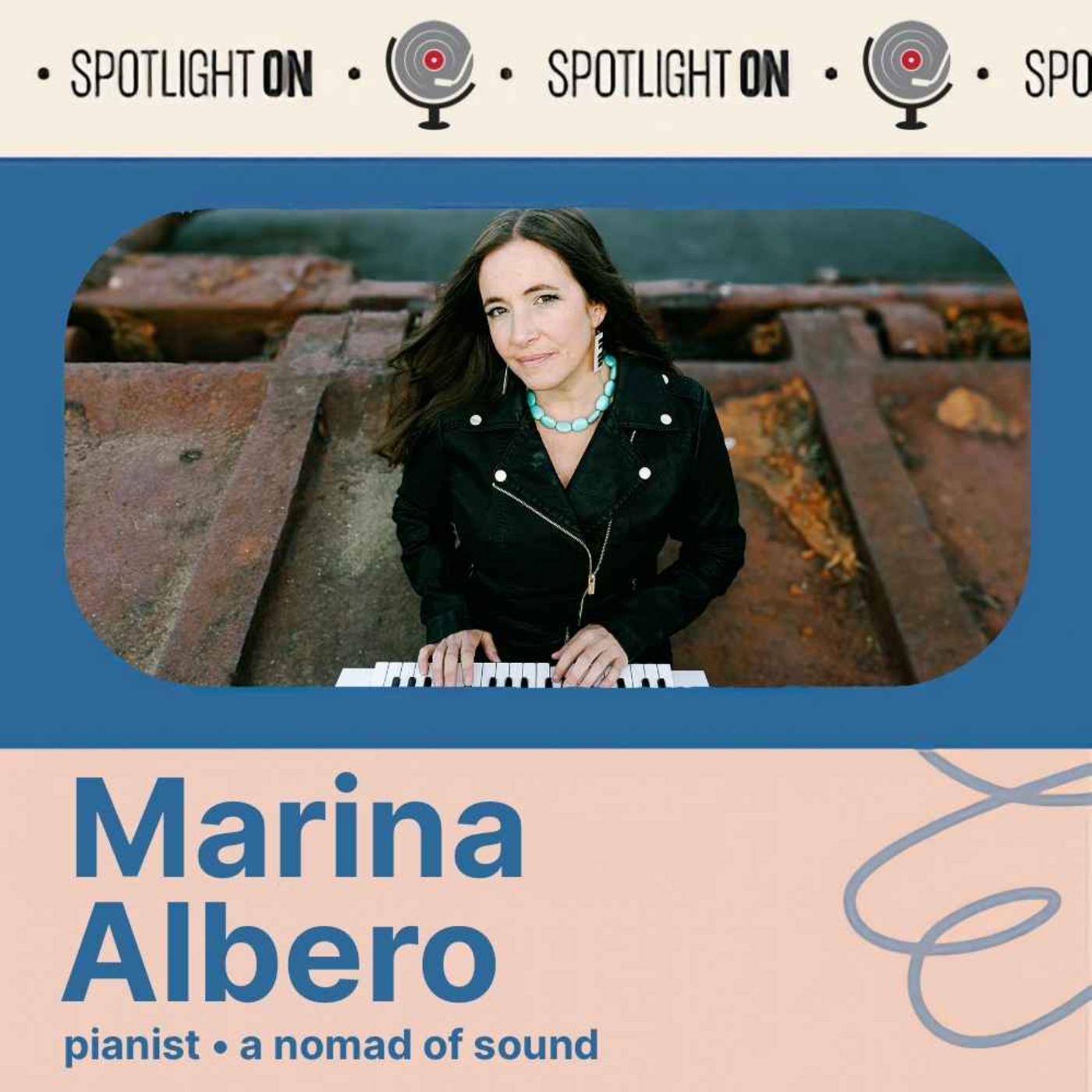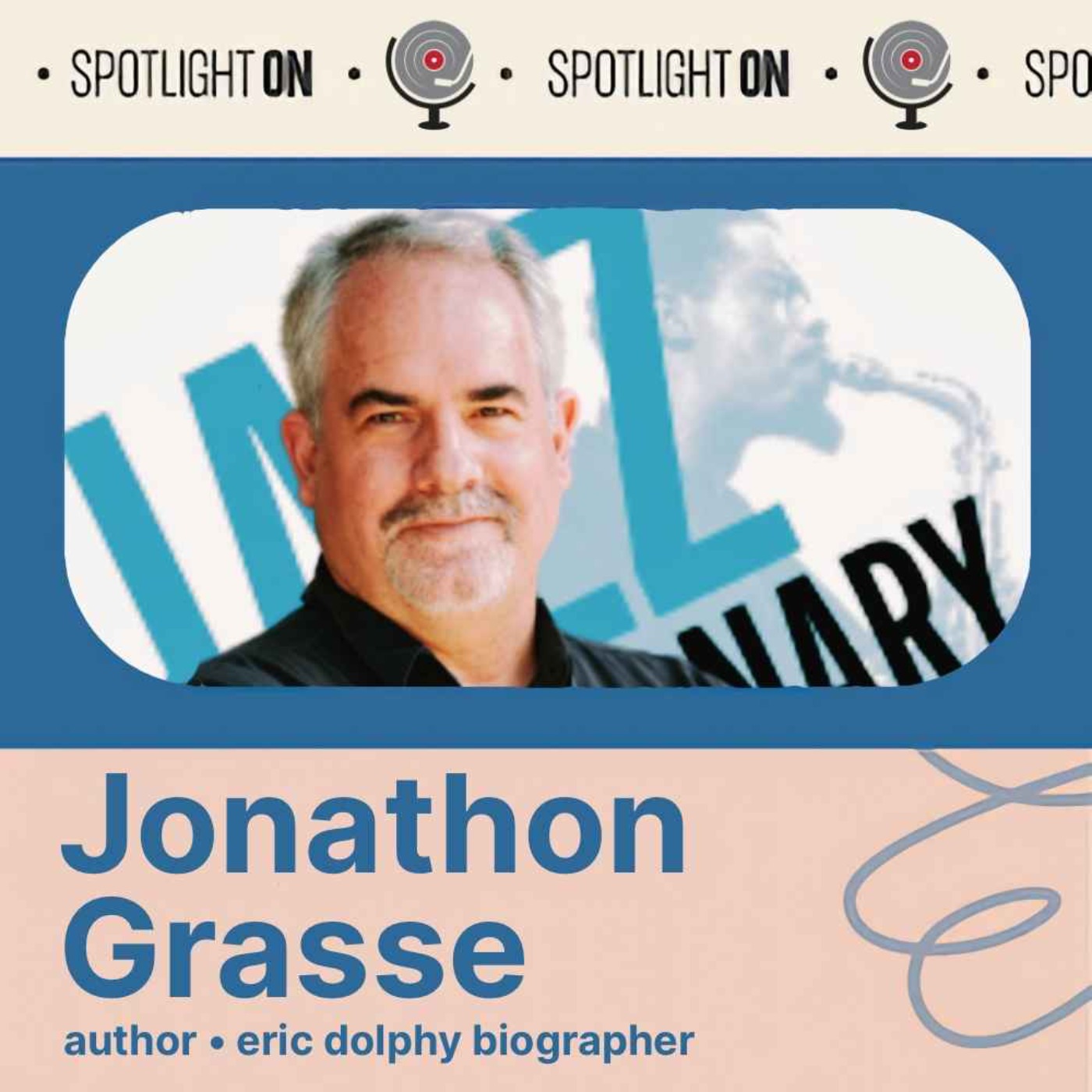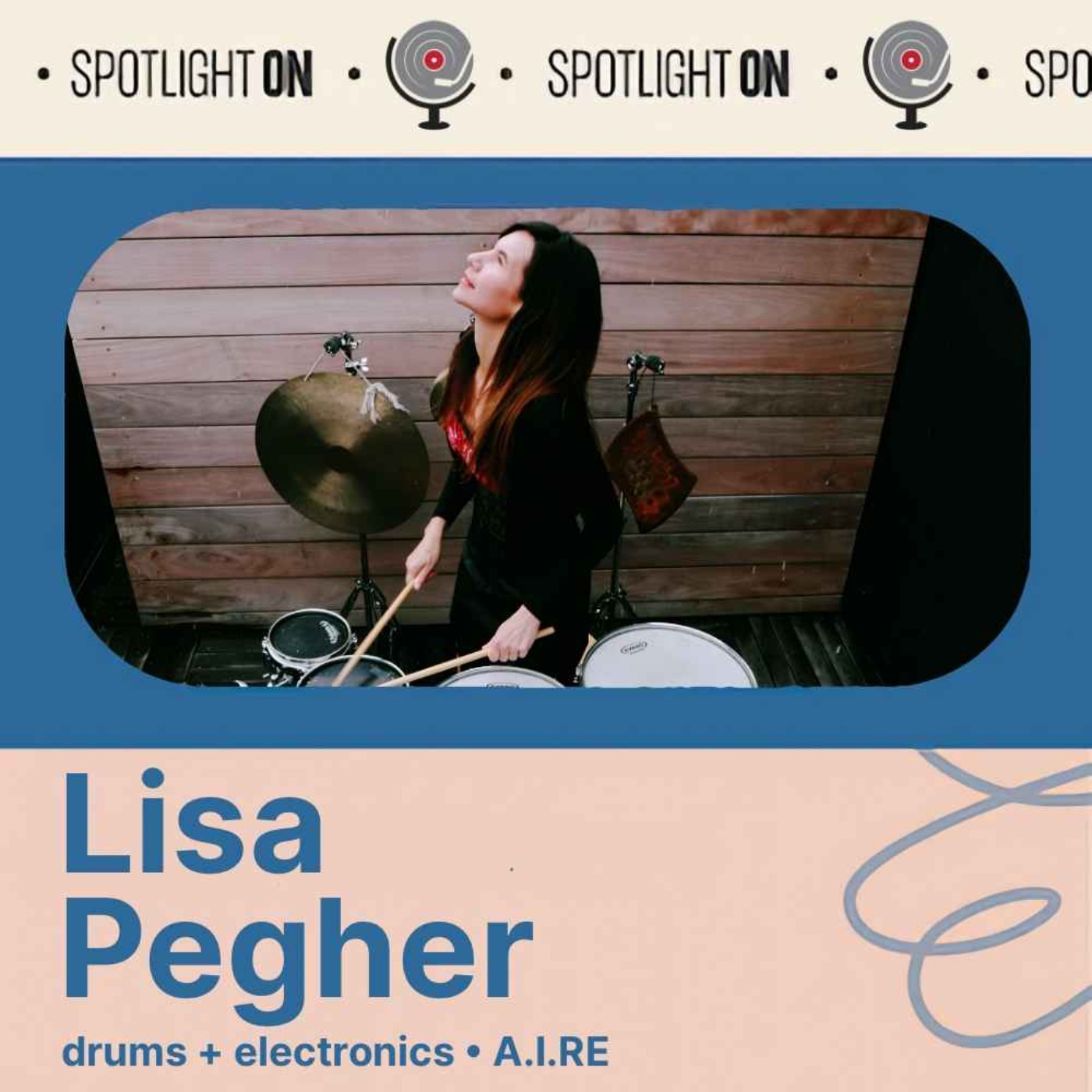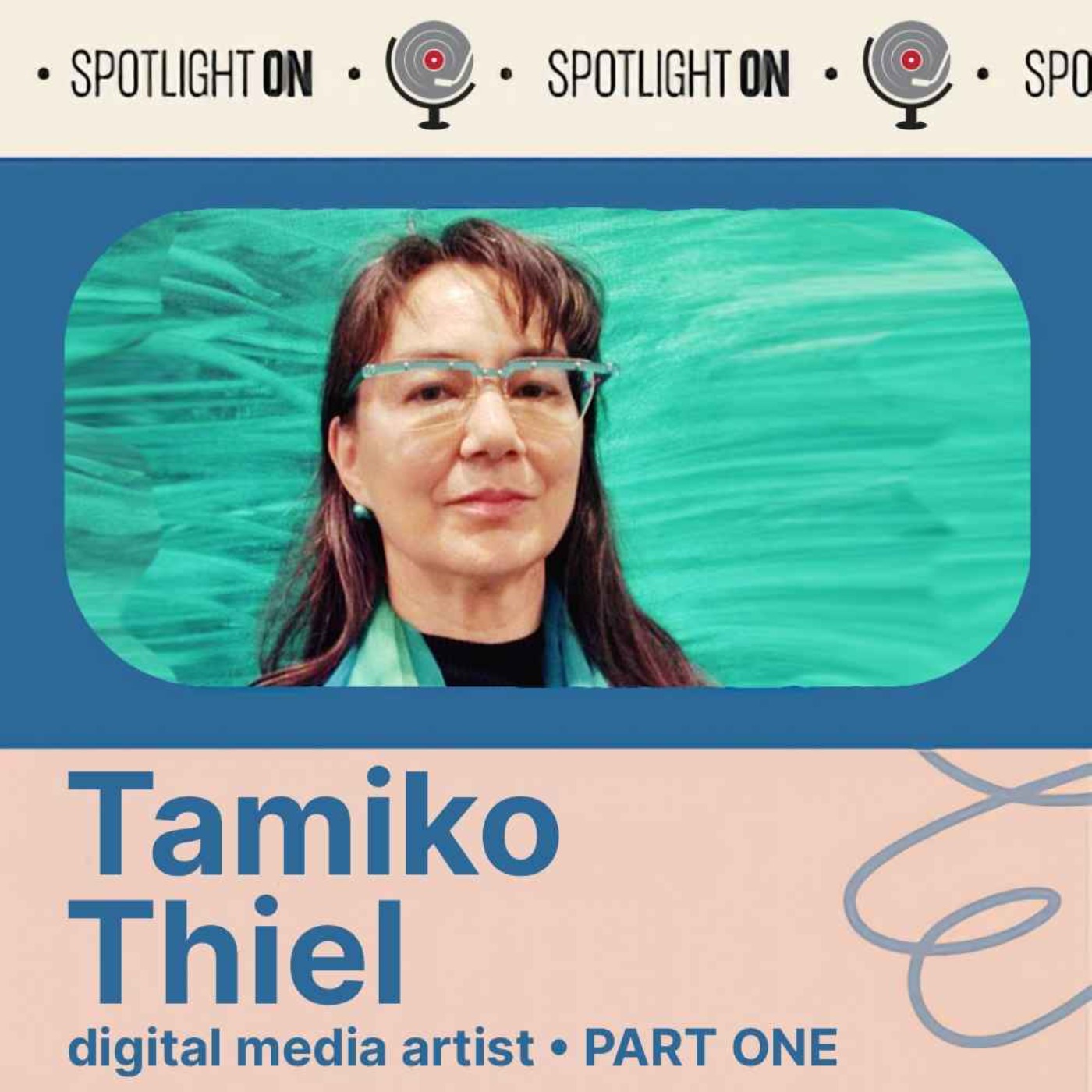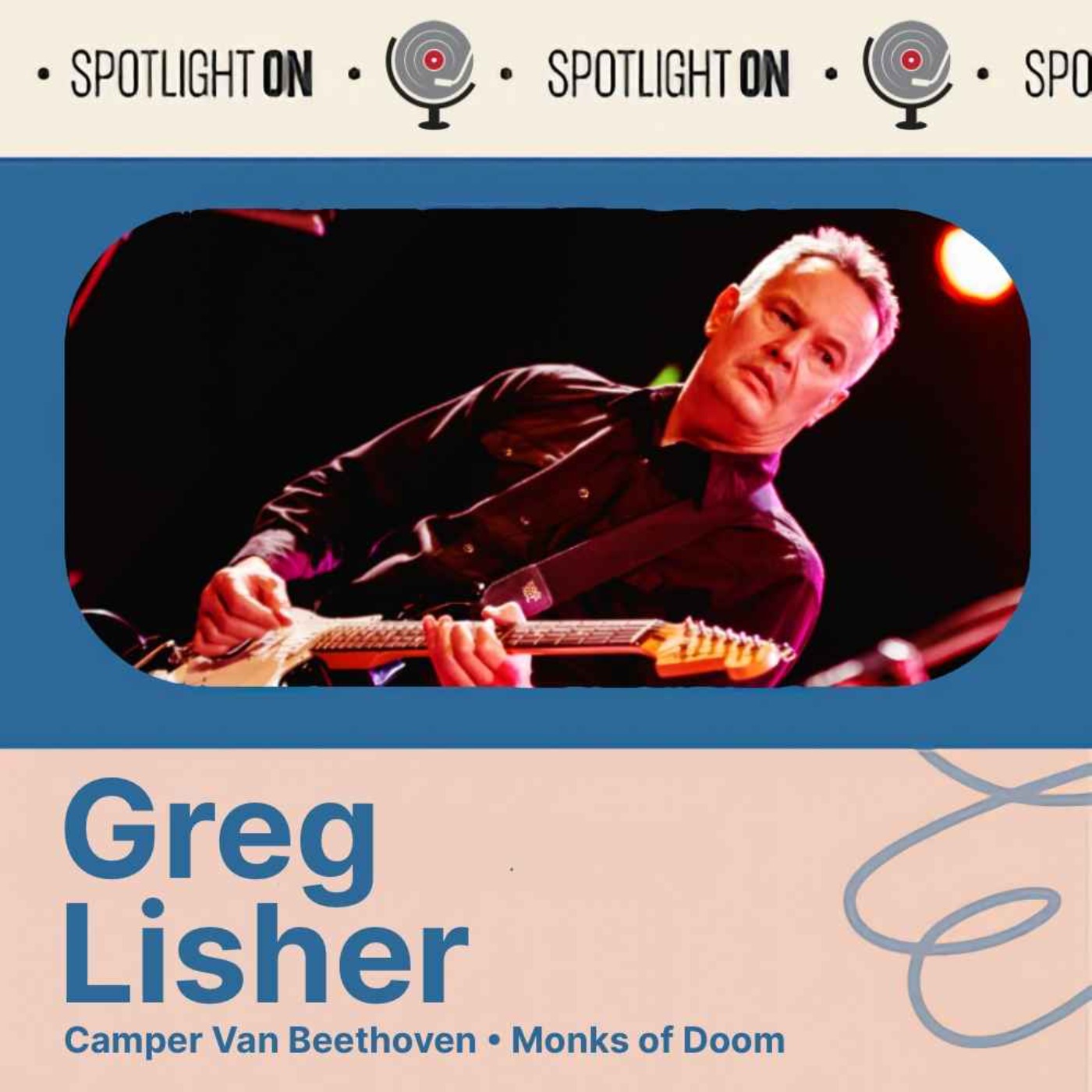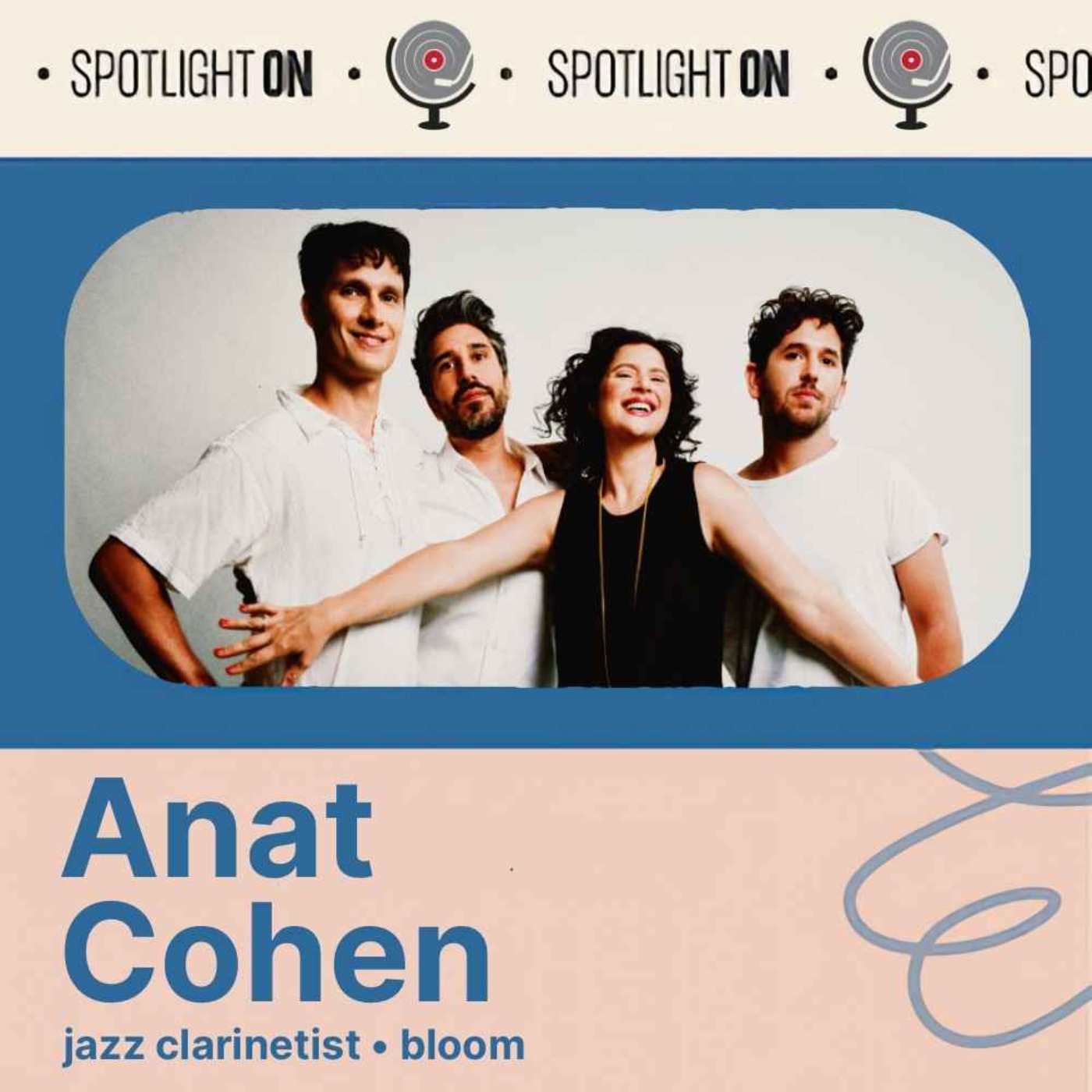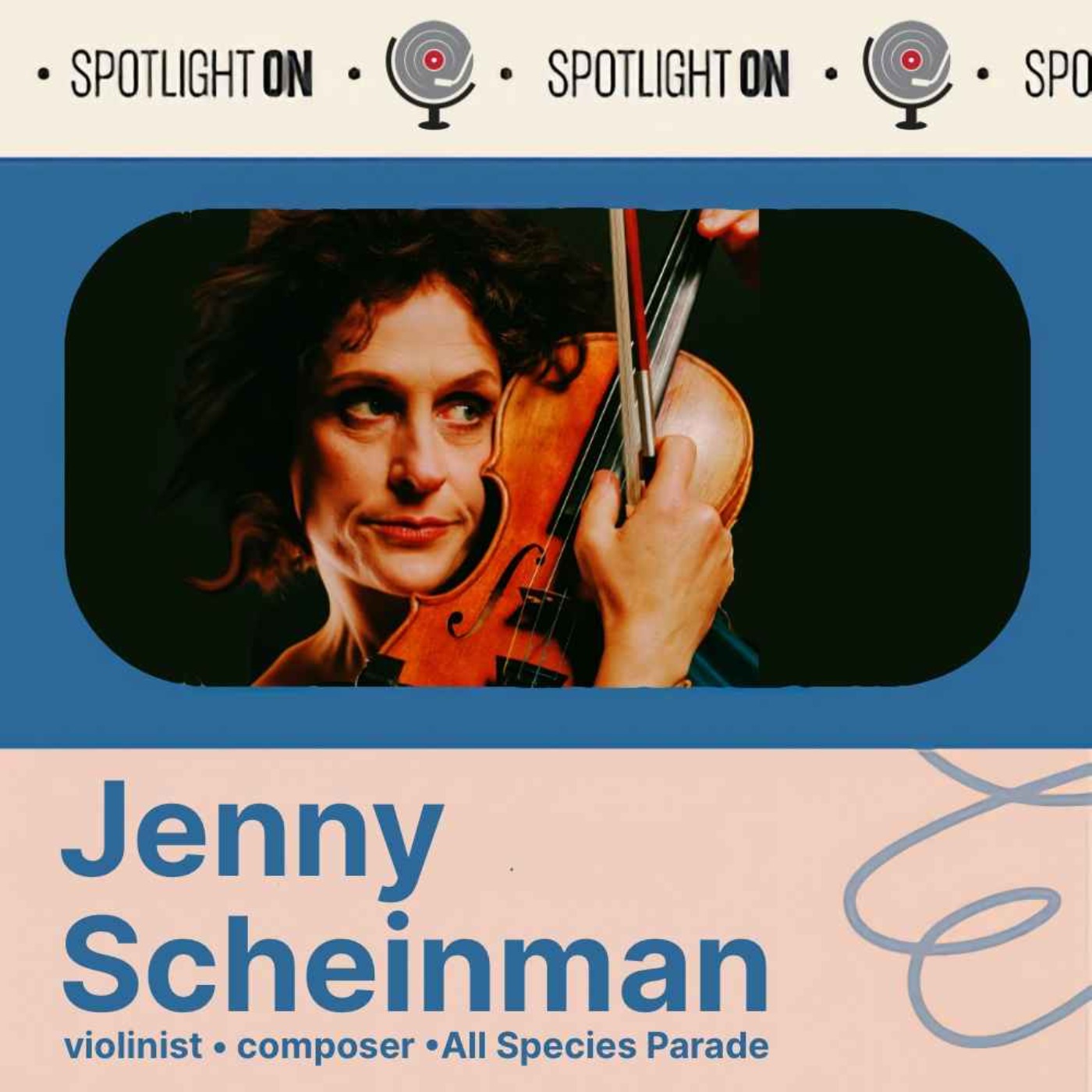Glenn Dickson & Bob Familiar: The Clarinet in the Machine
Clarinetist Glenn Dickson and synthesist Bob Familiar discuss their serendipitous meeting, patient creative process, and how they transform studio improvisations into the luminous compositions on 'All the Light of Our Sphere.'
Today, the Spotlight shines on clarinetist Glenn Dickson and electronic musician Bob Familiar.
When a cutting-edge klezmer artist meets a former rock synthesist, you might expect creative tension. Instead, Glenn and Bob found something else entirely—a shared language that turns clarinet and electronics into the most unlikely yet inspired pairings.
Their new album All the Light of Our Sphere layers acoustic clarinet with synthesizers and loop devices to create what they describe as orchestral ambient music. The tracks were recorded live with no overdubs, no click tracks, just two musicians finding their way through inspired improvisations.
Glenn brings decades of experience from klezmer to microtonal jazz, while Bob’s electronic landscapes draw from science fiction and years in Boston’s rock scene. Together, they’re creating something that sits between Brian Eno and Eastern European folk traditions.
(The musical excerpts heard in the interview are from Dickson and Familiar’s album All the Light of Our Sphere)
Dig Deeper
• Visit Glenn Dickson at GlennDicksonMusic.com and follow him on Bandcamp, YouTube, Instagram, and Facebook
• Follow Bob Familiar on Bandcamp, Instagram, and Facebook
• Purchase All the Light of Our Sphere from Bandcamp or Qobuz and listen on your streaming platform of choice
Musical Equipment and Technology:
• Boss DD-20 Giga Delay - Glenn’s delay unit of choice
• Expressive E Osmose - Bob’s multi-dimensional keyboard
• Rhodes MK8-FX - Modern incarnation of the classic electric piano
• Singular Sound Aeros Loop Studio - Advanced looping workstation
• Chase Bliss CXM 1978 - High-end reverb processor
Musical Influences and References:
• Robert Fripp and Frippertronics
• Brian Eno - Before and After Science
• Brian Eno - Another Green World
• Miles Davis - In a Silent Way
• Miles Davis - Bitches Brew
• Nils Frahm - Contemporary electronic/acoustic artist
• Tangerine Dream
• King Crimson
• Naftule’s Dream - Glenn’s avant-klezmer ensemble
• The Dark - one of Bob’s 1980s rock bands
• Hypnotic Clambake - Glenn’s eclectic rock collaborations
Electronic Music Community:
• New England Synthesizer Festival
• ARP Foundation - Preserving synthesizer history
• Ambient Arcana - Bob’s podcast with Jame Billbrough
(This transcript has been lightly edited for clarity.)
Lawrence Peryer: My first question is for you, Glenn. I wonder if you could tell me a little bit about the origin story of the collaboration, specifically about the night that you and Bob met, and what it was about what he was doing that caught your attention.
Glenn Dickson: Well, we met at an electronic music concert. We were both on the bill—I played earlier, and then I heard him play. What he was doing was developing and moving forward as opposed to a lot of electronic things, which are sort of stagnant in a certain way.
He was using loop processors that evolve rather than just stay in one place, which is what I do also. I don't just make a loop and stick on it. I'm constantly evolving, fading loops out, bringing new material in. So the music evolves and has a story going on, as Bob likes to say. It goes from one place to the next.
After he played and we were hanging out, Bob came over and said, we're doing similar sorts of things. Why don't we get together and play? So that's what we did.
Bob Familiar: It was really exciting to hear another musician who felt like he was living in the same world I was living in. It was like, okay, there's someone that is seeing the world through the same lens and approaching music through the same lens.
We were using different approaches—I was using synthesizer, Glenn's using a clarinet—yet we were using loopers in a very similar way, creating these evolving textures and landscapes and then playing over top of that. It just seemed like it was ripe ground for digging in and seeing what we could do together and how that would sound. So we just started on a path of doing lots of jams together.
Lawrence: How soon after that initial meeting and admiration of what each other were doing—how long did it take you guys to actually get together and get in a room and start playing together?
Bob: It wasn't long. Just a few weeks.
Glenn: It wasn't long.
Bob: We played together, I think it was April of 2024, and I think easily by May or June, we were in my home studio here and we just set up, started rolling, recording after getting levels, and we just started playing. We ended up playing for like two hours the first time. Recorded everything.
I went back and kind of pulled some parts out and shared it with Glenn. Said, "Hey, this is sounding pretty good." We made another scheduled get-together. We got together four times altogether. We had about eight hours of material after all of that. All improvised, but at the end, what was really cool was to find these moments that just felt like compositions.
I was like, "Wow, this is really cool." The way that this evolved, if we start here and we end here, as Glenn pointed out, there's a story arc right there. There's a beginning, there's a middle, there's an end. Beautiful melodies, beautiful changes. So we concurred and ended up with about nine tracks at the end of it.
Lawrence: Beautiful. You both have already said a couple of things that foreshadow some of the themes or topics I want to explore. The first of which was, Glenn, you mentioned the forward momentum and the lack of stagnation that you heard in Bob's playing as something that resonated for you or that appealed to you as opposed to some other ambient or drone music that can be a bit—I'll use the word stagnant even though it's sort of loaded in a negative way. I certainly like all the different types.
But I'm curious specifically about process. You mentioned the looping and the use of loops. Do you mind lifting the hood a little bit and talking about when you're creating the loops to keep the music moving—are you doing that in real time? Are you triggering things that you've pre-made? Could you just talk a little bit about how you enforce the movement?
Glenn: Well, for starters, I don't use an actual looper. I use a delay. The technical difference is a delay, and I use long, long delays, so it sort of acts like a looper, but you can fade things out and bring new things in.
Everything we do, and I can speak for Bob too, we input things live in the spur of the moment. We deal with it alive for our performances. And for these sessions that we did, there was nothing prerecorded, nothing added afterwards actually. So what you hear is what we did in the moment.
I've been doing this for a while and have a pretty good sense of what I want to have happen, how to make things happen, and how to correct things if they go awry or change things. So it comes from experience.
Lawrence: In that case, just to follow up on that, is it too heavy-handed to say that the delay unit and any other sort of gear that you might be employing in the moment—you have to have proficiency with those as instruments as well, it would seem?
Glenn: Oh yeah, it's definitely—and Bob's setup is more complicated than mine, but yeah, you have to be used to working with it in the spur of the moment. You can't have to sit there and think, "Okay, what do I do now?" It's like, bam, you know, and you're playing and you're doing it while you're playing and making music out of it. So it's definitely an extension of the instrument to a large degree.
Lawrence: Bob, the other element that came up in the opening comments from you both was the idea of narrative and structure, and I think one of you said beginning, middle, and end to how the pieces wound up feeling and coming across as compositions. Will you tell me a little bit about the literary inspirations and sources that you tap into for creating electronic and improvised and story-based music?
Bob: Sure. I read a lot, so pretty much reading something every day. I'm pretty much a hardcore science fiction fan, so reading a lot of science fiction or things where you're just on the boundary of more traditional literature. I enjoy that. And that inspires me just to take some chances and try to evolve my own playing so that it has some structure and yet changes over time.
Technically, as Glenn was talking about his looping, my looping—none of this is synchronized. So I'm using loopers that are unsynchronized. In the same way, as I input ideas into these, now that's another musician that I'm, in essence, working with. So it's almost like another character in the story. So now as I'm working against that, okay, what's a motif now that might blend nicely with that and find some space to fit that in? And all of a sudden there are just these ideas floating over one another.
As Glenn and I were playing together, what really thrilled me is that Glenn is such an amazing player. His melodies that he gets into, the way he structures his melodies, are so beautiful. So we're both creating these underlying motifs that are layering and floating over one another, and they're not necessarily in time. So that changes itself, or that foundation is shifting, and Glenn is playing these beautiful melodies over top.
From the story perspective, that's where my ear saw the arc. It's really in the mixing, in the effort of mixing this, tapping into Glenn's own playing and just the way he evolves his melodies. That's where, for me, it's like, "Wow, that's where this whole story arc is really coming from," the way I listen to it.
Lawrence: Glenn, are you thinking narratively as you're constructing an improvisation or one of these pieces?
Glenn: I was just thinking about that. (laughter) I'm thinking, okay, I just did this. What's gonna sound good next? Basically, you know.
Bob: And he's very good at it. He chooses wisely.
Glenn: I'm just going along and thinking, here's where I am. Where do I want to go from here? And when I listen back, I'm sort of surprised that it sounds coherent, because I'm not—you sort of get into a zone where you're just playing and making things happen, but you're not necessarily totally conscious of it.
Although part of my brain is like, "Okay, is this going on too long or should I bring something new in here?" There are a lot of things going on in your mind while you're playing something like this. That's why it's just important to have control over your technology, so it's intuitive so you don't have to put another part of your brain into the technology. You're just sort of making choices and making them happen sort of automatically because you know how it all works.
Bob: I was just gonna add, it just takes a tremendous amount of patience, I think, on both our parts. I'm listening to what Glenn is doing. I'm listening to what I've just generated. So now all of that activity is going on, and it's being really patient as that evolves, just not to start piling on top.
There'll be many times when we're performing live now that I might not do anything for a minute, minute and a half, two minutes because everything is there. It's like if I added anything, it would ruin it. I'm gonna let this ride. And then when that starts to settle down, then I'll bring in a new idea. So that patience, I think, is really critical to this kind of music on both our parts.
Glenn: When you're dealing with things that aren't synchronized and also Bob's loops are generating new and algorithmically evolving on their own. So to a certain extent, you have to always listen to how things are evolving with the loops and the ideas that are already happening and be careful not to overload the system or just be really aware at the same time of everything that's happening.
Lawrence: The rather obvious juxtaposition between the electric and acoustic elements here, the technology and the organic, or the digital and the analog, or however you want to characterize the fact that we have a synthesizer wizard with a clarinet wizard together—I love the meeting point of structure and improvisation as well as the electroacoustic blending. It's some of the most interesting creative music right now, I think, blending all of those things.
Something I'm really curious about is the way you've introduced what I would think of as some constraints into your process, especially the album recording process. You mentioned no overdubs, and my understanding is there weren't things like timers or click tracks or things that I don't necessarily think of as cheats or shortcuts or anything like that, but they're choices and they create a certain box or environment for you.
Something that comes up repeatedly as a theme when I speak with artists is that if you don't have any constraints, it's almost impossible because you could—there's too much, it's overload. I'm curious if you could talk a little bit about maybe the philosophical or practical considerations that go into some of the constraints you chose to impose on your process.
Glenn: For me, playing a clarinet is a big choice. It allows a certain expression, at least for me, having played a long time, but also, on my end, the electronics are very simple. Everything I'm doing is pretty simple, and I've explored it fairly deeply. So I feel totally comfortable in that.
And it is a limitation. I sort of limit myself to stuff that I can really understand what I'm doing with, and if it gets too out there technology-wise or anything, I want to keep it totally within what I can control. I don't know. What do you have to say about that, Bob?
Bob: You mentioned a lot of the choices we made. So for myself, I chose—I've got a lot of instruments. I have learned throughout the years of doing this that if I try to go, "I'm gonna use all five of these, these are my favorites, I'm gonna do all," then nothing gets done. So just paring it down and saying, playing with Glenn, what I envisioned was, what would work well with the clarinet was a Rhodes piano.
So that was one choice that went through its own looper and its own set of effects. And you can hear a lot of that anywhere there's the Rhodes being used on the album. It's recognizable. So there's that. But the other instrument is the Expressive E Osmose. So this is a new kind of instrument from Expressive E where they've introduced technology into the keys themselves, which allow the keyboard player to be very expressive.
So there are multiple stages as you press the key down that are programmable, the key can move left and right, and that can be programmable. So doing things like having a sound that might start off clicky, but then speed up, and I can control the speeding up and the slowing down, or even more simply just the brightness on a pad and bring that brightness in and bring it out. But I'm controlling that through the way I'm playing rather than turning knobs or post-processing or anything like that.
So it allows me to be expressive in the moment. The Rhodes allowed me to be expressive in the moment. And those were sort of the constraints. I said, I don't want anything synchronized. We're not using a drum machine. We're not synchronizing the three loopers that we were using. We're just gonna let them float free and allow ourselves to be expressive through the instruments that we're playing. Glenn incredibly expressive on the clarinet, and I was trying to stay up with him on that through my instruments being expressive and blending in as well as I could.
Glenn: One more thing related—it sounds like when you say, "Okay, I'm not gonna use a click track," that opens things up, and maybe too much. But for us, it's part of what removes the limit off, which doesn't need to be there. Or that limit boxes you in to a certain extent. So by not having everything synchronized, things float around and it gives them more of an atmospheric feel, and it removes the boxes that a constant click or whatever creates.
Bob: And that's hard. That makes actually the playing and the performing harder. You have to be, like I said, very patient, and you have to be listening really well so that you're not clashing, that you are introducing ideas gently and purposefully, as the moment arrives when, okay, now's the time to bring this in.
You have to work hard at that when you're not using the tools in the studio to allow you to say, "Oh, you know what, we can go back. I can just clip that out and we can overdub a new part right in there." That's a great thing to be able to do, and I've done a lot of that in the studio. But for this, it just felt like, let's challenge ourselves in this way and see what happens.
Lawrence: Can you tell me a little bit about how these pieces go from studio performances to translating into a live setting? Have you begun performing yet? Or what's the live presentation idea around these?
Glenn: We've done some performances. We just played a couple nights ago, Saturday night. For the most part, we're still working that out, I suppose, to a certain degree, but for the most part we just go in and we sort of set up key structures for ourselves. And then everything else is the same way that we did it in the studio.
In the studio, we didn't talk at all before we started playing, except "let's play in this mode or this." But when we're playing live, we will have a structure of going from one key to the next. If we're gonna be playing for an extended period so that it doesn't get monotonous key-wise or anything.
But we did our album release concert the other night, and Bob took some of the Rhodes tracks. We'd never done this before, but he separated out the Rhodes tracks and played them. And we played over some of those for the album release, just to sort of give that flavor of what the album was. I don't know if we'll continue doing that. We haven't talked about it, but... (laughter)
Bob: I mean, the Rhodes is just really heavy.
Glenn: Oh, to carry.
Bob: Lawrence, I'll hurt myself if I try to lift it and carry it anywhere, so I'll say, okay. If we wanted to sort of create a flavor of, let's say, the opening track or one of the other tracks that had the Rhodes on it. If I just extract that one track and have it as a backing track, which is easily done with a laptop in the mix, and take the audio out from that. Now that's playing, and Glenn and I then just improvise to that.
So we're not really recreating that original piece of music that's on the record, but we're just gonna use that motif and we'll improvise over top of it.
Bob: I don't know. I mean, we do really well if we just go, "Okay, let's go through these five key centers for the next forty minutes," and we'll sit down and go do that. So that actually a lot of times feels a lot more comfortable than trying to play to the backing track. But I was just trying to figure out—people are starting to like a particular piece off the record that maybe they want to hear us do that. But we don't have to do that. But it was a thought. It's an experiment. Everything's an experiment every time we get together.
Lawrence: So it's really interesting 'cause it sounds like you use the backing track almost the way a jazz group might use a theme as the basis for the exploration. But if you go see them five nights in a row, you're getting five variations on that theme.
Bob: Exactly.
Glenn: The Rhodes parts on the piano, on the album are foundational. I guess the equivalent of a chord change or a vamp or a—so it sort of gives something to play over that's reminiscent of what we did, but we're doing something different. It'd be interesting to learn some of the melodies I actually played, but I haven't done that. (laughter)
Lawrence: I was always curious about that when the process that you described about going into the studio recording longer sessions and then finding the compositions, if you will, within those. I'm always curious as to whether or not artists that record that way ever run the recordings through a sheet music generator, a transcription program or something to see what—to generate a score, basically, to see what that would look like.
It's just fascinating because you speak about them as after-the-fact compositions, and we know that improvisation is composition in the moment, but it'd be so interesting to see that and then to try to perform it. (laughter)
Glenn: Some of the melodies that I played are pretty clear-cut and it would be possible to do some of those melodies. It'd be interesting. Well, one thing that just occurred to me as we were talking about this is, you know, Miles Davis used the same process like when he was doing Silent Way, Bitches Brew, and In There. They were just jamming in the studio and then they cut it all up and made tunes out of 'em. So it's sort of a similar process really.
Lawrence: When you talked about having the sort of set of chords or modes that you might talk about in advance—making sure that gives your presentation some variation when you're performing live. To double-click a little bit on that—if it's a, let's just use your example, it's a forty-minute set. Do you say, "Okay, these are the five modes we're gonna play in and we're gonna change every eight minutes," or are you—how do you signal? Like, as improvisers, are you using cues and...?
Glenn: No, we're just following each other's leads and listening to the music and saying, we're both sort of independently saying, "Okay, now's about time," or "It feels like we're winding that up. Let's go into something else." We might look over at each other just to make sure that we're on the same page.
Lawrence: So basically if somebody feels that musical idea has run its course, or they're ready for a transition, they sort of work towards the transition and then you move along.
Bob: And we typically choose chord centers that are related to one another. We might go through almost like a circle of fifths. Something like that and decide, "Well, this one's major, this one's minor, this one's Lydian," you know, "we'll do this one as a Dorian, whatever." We'll just figure out modes and key centers.
And so a lot of times it's, oh, as Glenn likes to say, we'll just add a sharp. So that's the transition. Soon as you hear that, it's like, "Okay, now's the time." (laughter)
Glenn: For me, even if we say, "X key, C major," that to me is just a group of notes, and it may or may not be C major. It may be just a mode out of that set of notes. It's more of a set of notes, and I don't think most of the time I'm even aware of what or how—where the tonic is, except for intuitively. I'm just going for a certain note, not thinking intellectually in that way.
Lawrence: So it's more of a framework, a guiding principle to ensure some variation.
Glenn: Yeah. To just change our sets of notes periodically. I mean, that's one of the things about ambient music—if you stay on the same thing for a long time, it can get boring, or some people would say it's more meditative, but I like the feeling of moving from one key to the next, varying it that way.
Paul Simon liked to say he would order his albums by the keys, not by what song—how what song went from one to the next. It was more like how the keys of the songs progressed. It's sort of like you want to hear it. It sort of gives you a feeling of movement when you do that.
Lawrence: Tell me about the title track. So All the Light of Our Spheres, both the album title and a track on the album. And if there's something about that particular piece—why is it the title track, I guess is one way to ask you, but what I really mean beneath that is, is it somehow representative or emblematic of what you guys were after or what you achieved? And if it's not that deep, that's fine, but I'm curious as to whether that particular track means something in relation to the overall project.
Bob: I think what's important to know is probably first how the names of the tracks were chosen. I'll let Glenn tell that story.
Glenn: So I often do this or have done this before. I look through poetry books and pull out lines that I like or little phrases. "Oh, I love this for this." And so I just pulled off a translation of the Inferno, Dante. And just sort of was going through and pulling out little phrases that I liked. I made a whole list of phrases.
Then I listened to the tracks and said, "Oh, this one goes with this one, this goes with this. This feels like this." So I just sort of matched them up that way. I liked the sound of the words, and I thought the feeling that they had matched the sound of the music.
As far as using that one for the title track, I just liked the expression. The luminous quality of it. It sort of goes with the cover photo on the CD. It just felt like the right phrase to sum up what we were doing. That's how—it's not that that particular track summed up musically what we're doing, perhaps, but I wanted to have a title that sort of expressed what the album was about.
Lawrence: I think one of the most interesting topics that I get to explore with a lot of artists who work in improvised realms and instrumental realms is this idea of the narrative arc in music that does not have lyrics. Conveying narrative in instrumental music as well as—I love the titling process. It's so fascinating the way different artists answer the questions around how they approach titles.
The range could be on one side, like I've had artists say to me, "I don't even know the titles. Like somebody else titled it, or I let one of the band members or the producer or the engineer had an idea and we just let—'Yeah, that sounds fine.'" Fascinating. And then other people, like, it's part of a very specific narrative or conceptual or thematic presentation. And I love the room and the space for all those ideas.
Glenn: To me, the titles, especially on an instrumental track, just give the listener a direction or a feeling that's helpful maybe for a listener to have. And so they're not necessary. Obviously we didn't talk about the titles before we played. We just played.
But it's also like when we play—a lot of electronic music concerts have visual components to them where visual artists are doing moving visuals while you're playing. And that's not necessary either, but it helps some listeners to focus in on the music or to create a vibe for them that helps them into the journey, so to speak.
Bob: I thought that the titles that Glenn chose were just perfect because the music itself is very poetic. And having the titles drawn from great poetry, I was like, I was all in on that. (laughter)
Lawrence: That's great. I have just a couple of last questions for you. Bob, I'm gonna go to you for this one. I'm really curious about some of the broader work you do in the electronic music and sort of world of synthesizers and electronic music. It's such a deep vein, and I think with maybe electronic music in general, having a longer history or a richer history than I think maybe some people realize.
I'm curious if you could talk a little bit about tradition there. Because we talk about tradition so much with jazz artists and creative music artists and where they fit and where they came from, and how they see themselves, and where any individual project might even fit in a tradition. I wonder if you think that way or if you're cognizant of the strands and what strands you might fit in and what this might fit in, in the universe of electronic music.
Bob: What drew me to electronic music is I loved that it seemed to bridge engineering and art. And I always liked being in that space. So I went to school as an engineer, but I've been a musician my whole life. It was just drawn to that nexus.
And when electronic musicians get together, we're talking as much about our gear and who manufactured it and what technology is used, and the firmware and the knobs came from this supplier and the circuits from this supplier. And based on Bob Moog's design, or this is a Buchla design. It's an Arp. Whatever it is. So the personalities, the engineers who created the instruments, are the rock stars, I think, in that world as much as the people who even play the instruments. So that's kind of the tradition for me. That's the legacy of it.
And coming up from that, then you get drawn into not only commercial music or jazz where these instruments are being used and actually starting to show up back in the seventies and the eighties when I was becoming aware of that world and participating in it. You're also, because of the engineering aspect of it, you find yourself drawn into the very experimental side that is so critical, I think, to electronic music and the influence it has had from the classical composers who adopted electronics in the forties, fifties, and sixties and started to compose pieces just for electronics.
You still see that today where there's this bridging of experimental music, even noise music, ambient, and over into commercial, EDM, and a lot of pop music, which uses a lot of technology these days. So all of the artists that are in that space, it's interesting. They all get together.
And so one of the things I do is I sit on the board of the New England Synthesizer Festival, which we run twice a year here in New England. And we bring together the engineers and the musicians for a day of performances, what we call a synth petting zoo. So everyone gets to check out all the different gear. We have vendors come in that anywhere from folks who manufacture their own guitar pedals to synthesizer manufacturers. The ARP Foundation is usually always there. Dina Pearlman, who runs that.
And there are lectures being given by professors from Berklee or musicians who are experts or engineers who are experts in certain areas. It's just an exciting space to be in. And the performances will range from something that's more like EDM and dance music. And the next thing might be a noise artist. And the next thing after that will be ambient.
And it's just really cool to see the range of artists and what they're sharing with each other. And there are no walls between all these folks. 'Cause what binds them together is the equipment and the history of that equipment and the engineering aspect of that equipment.
Lawrence: Before I turn to Glenn for my final question, Bob, would you be willing to maybe name a couple of artists that from the field of electronic music as broadly defined as possible that you have found over the years, particularly inspiring or maybe even just interesting?
Bob: I would be remiss if I didn't mention Brian Eno. Certainly when I was—it's interesting when I was at Berklee in the late seventies, I don't know if I was the only one, but I felt kind of alone that I was the one listening to Brian Eno and everyone else was listening to Asia and Steely Dan, and I loved that. But I was like, but I'm gonna put on Before and After Science 'cause I just thought that, or Another Green World. That to me that was exciting and that was sort of the direction I wanted to go in.
And of course the work he did with Robert Fripp, and I was always a fan of King Crimson, and interesting, the looping machine I use is based on the work that Eno and Fripp did together back then when they were connecting tape machines together. So that is certainly in my roots.
And I would say, gosh, there's so many. These days Nils Frahm sticks out to me. I love Nils Frahm. I love Tangerine Dream, Kraftwerk. I mean, the list is long. There's so many influential players—Herbie Hancock, even. They were all influential because what they demonstrated is, look, we're all using all this similar equipment, but look at all the different creative things we can do with it. And that's what drew me to the electronic instruments, was just the vast array of possibilities.
Lawrence: Thank you for that because that really dovetails into the question I wanted to ask Glenn around the idea of—listening to Bob, you get a sense for the versatility of those instruments. They show up in so many contexts: rock, pop, EDM, experimental music, modern classical, jazz. It's so fascinating how the artists who use those instruments have been able to adapt them in so many contexts.
But you are doing that as well with an instrument that comes from its own very specific traditions. Yet the clarinet is—I have a love for the sound of the clarinet. It's even surpassed the tenor saxophone for me as a sound I could listen to endlessly. And I'm very curious to hear your perspective about where do you see the clarinet and this hybrid approach you've explored with this music—where do you see it heading, either for yourself? Is there—is this a vein for you to tap into and do more work in, or for the clarinet more broadly? Like, did you always know the clarinet was this versatile of an instrument?
Glenn: From the time I was in college probably, and just started hearing a lot—I went to New England Conservatory and heard a lot of the clarinet being used in a lot of different ways there. Just being exposed to all the klezmer and the Balkan and the Turkish and then also early jazz, the fluidity of their pitch and tone that they were using. I started to realize just the clarinet was capable of a lot of things also.
And there are a lot of people using electronics on the clarinet now, and a lot of composers composing. So I'm just doing my own thing. But really to tell the truth, I came out of Robert Fripp because when I was a kid and I went to hear him play doing when he was doing his Frippertronics tours with the two tape decks and everything, and that just blew my mind.
And it wasn't for like another twenty years that the equipment sort of evolved, that I could do it on a clarinet, similar sort of thing using just a pedal and a pickup mic. And as soon as that happened I was like, "Yeah, I'm gonna do this." Because that was a formative experience for me. Hearing Robert Fripp and what he just—the musical technique. So it didn't matter that it was a guitar.
As far as evolving and exploring, I'm starting to explore—I'll put it this way. I've always been very—I love the clarinet sound too, and I didn't want to really mess with the sound that much, but I'm starting to mess with the sound a little bit now, using distortion pedals and guitar pedals on it a little more just to vary—for musical variation and for certain situations.
If you layer too many clarinets on top of each other, it's hard to penetrate through that with a melody. So I'll change the sound for the melody, that sort of thing. Or I'm starting to use different techniques and bring in different things, exploring the whole world of electronics to see what makes sense. I try to make it something that makes sense to me or that I imagine and not just sort of randomly doing stuff. (laughter)
